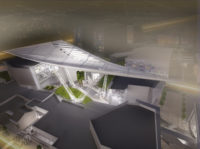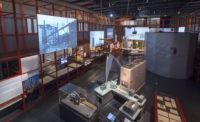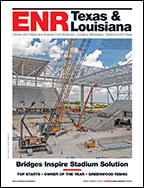Arup and the contracting team on the Jorge M. Perez Art Museum in Miami have exchanged nasty lawsuits over a disputed bolted building canopy connection, the failure of which both sides say caused heavy erected concrete canopy beams to fall in November, 2012. The accident could have badly injured or killed workers but no one was hurt. Expensive repairs were needed.
The lawsuit involves Arup USA, the New York City-based unit of the big London-based engineer.
At stake are damages sought by the contractors from Arup and money Arup says it is owed by the museum and funds Arup deposited in an interim account used to fix the problems so that the museum could open on time for the Art Basel modern art show in December.
Arup's lawsuit targets the museum, Hollywood-based John Moriarity & Associates of Florida and Gate Precast Co., Jacksonville.
Gate Precast struck first on April 4th in federal district court in Miami in a negligence lawsuit against Arup seeking $5.5 million. Gate accuses Arup, the structural engineer of record, of directing Moriarity, Gate and its subcontractor to used threaded 410HT stainless steel rods in precast canopy tees. The tees weighed between 11,000 and 19,000 lbs each and were hung or suspended beneath the museum frame, claims Gate.
The tees were supported “only by 410 hardened and tempered stainless steel rods" that Gate claims were susceptible to “corrosion, embrittlement or cracking, all of which were exacerbated by the Project’s location on Biscayne Bay.”
The complex relationships and responsibilities on the project will almost certainly figure in any settlement negotiations or trial if it reaches that stage. Gate hired Leap Associates International to provide engineering services for the precast concrete, including design of some precast members not designed by Arup, the structural engineer of record.
An attorney for Gate declined to comment on the lawsuit.
Arup’s Response
In Arup’s fraudulent inducement and breach of contract lawsuit, filed April 8th in state court in Miami, the engineer charges that the contractors failed to detect that the 410HT bolts that arrived at the museum jobsite had been tempered at twice the temperature required, making them brittle and susceptible to failure.
The engineer seeks $400,000 in money it says it is owed by the museum and another $1 million for consequential business damages and costs.
Arup claims the contractors should have been alerted to the trouble when a construction worker accidentally kicked a bolt, breaking it. The worker kicked another bolt and it broke, too, Arup claims. \
Even if Moriarity, Gate and Leap “missed the pertinent information in the heat treatment certificates” that arrived with the bolts and “failed to realize the fabrication mistake before the T-Beams were hoisted 60 feet in the air creating an extremely dangerous condition,” the companies “knew or should have known that the bolts were not manufactured correctly because of events and warnings received three months prior to the collapse.”
Arup claims metallurgical studies carried out by consultants to the contractors prove that the bolts “had not been properly fabricated,” but the studies so far have not been filed so that they are visible in the lawsuit dockets. Also, the exact source of the bolts and the procurement chain isn't yet clear from court pleadings or evidence in the docket.






Post a comment to this article
Report Abusive Comment